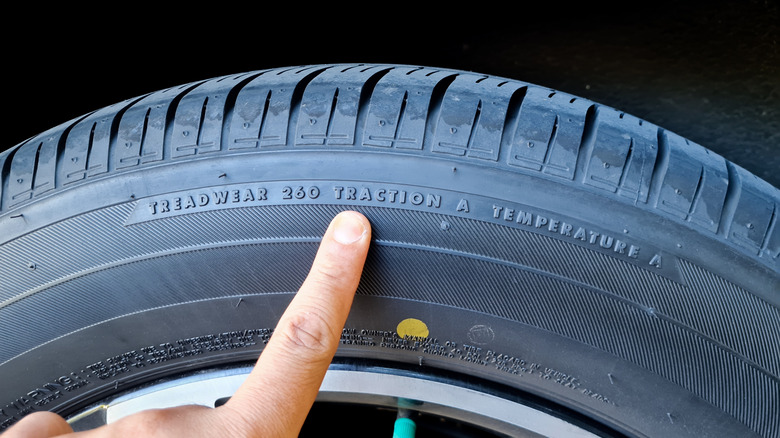What Are Tire Temperature Ratings And Which One Should You Get?
There's a lot of technology that goes into modern tires. From knobby off-road tires to high-performance summer-sport rubber, there are all sorts of tires for just about every activity you can think of in a modern car or truck. Amongst all those tires, there are numerous considerations for consumers buying a new set. You should check the numbers on the side of your tires to see what your tires' ages are, and if you're interested in going fast, there's a simple way to check the top speed rating on your tires as well. But what about temperature ratings? As it turns out, tires can only get so hot before they become damaged or fail entirely.
Uniform Tire Quality Grade (or UTQG) ratings, which are marked on the side of tires, give us details about tires and how they should be used. UTQG includes treadwear rating, traction grading and temperature rating. Treadwear rating has to do with how many miles a tire will last, traction grades are designed to give us an idea of how grippy a tire is, and temperature grades give us an idea of how a tire responds in high-heat scenarios. As tires move along the road, they build up heat, so to make sure they don't fail, we need high enough temperature ratings.
Going fast? Get the top temperature grade
Temperature grades are a lot like the grades you receive in school: A, B, and C. Thankfully, there are no D's or F's here. The lowest rated tires get a C rating, and that corresponds to a top temperature of 212 degrees Fahrenheit while driven at speeds between 85 and 100 mph. B-rated tires move up to 230 degrees, with speeds between 100 and 115 mph, while A-rated tires are capable of reaching temperatures of 249 degrees at speeds above 115 mph. This is all, of course, with the tires properly inflated.
So, which ones should you get? The difference is really down to your planned use of the vehicle. A-rated tires are very common, especially amongst high-performance tires. These are probably best for sports cars and even regular daily commutes in warm climates. B-rated tires are generally useful for most everyday driving scenarios, especially in areas with inclement weather. C-rated tires are best left to low-temperature climates (they're also the least common tire grades). Take note: some tires won't have letters corresponding to temperature grades at all (trailer tires, some winter/snow tires, etc.), so it's best to heed any speed or use warnings that may be associated with those tires. Also, be sure to adjust your tire pressure when the weather changes, as improperly-inflated tires can lead to premature tire wear and eventual tire failure.

